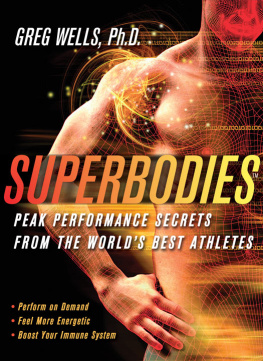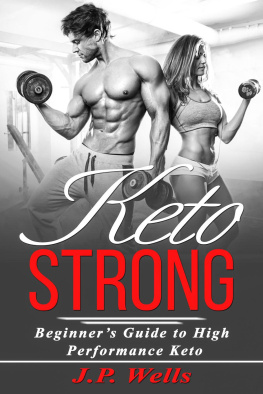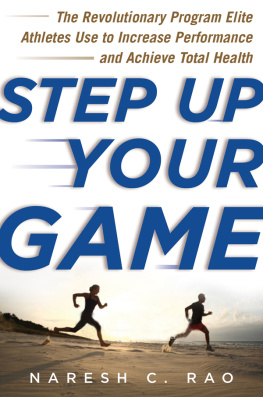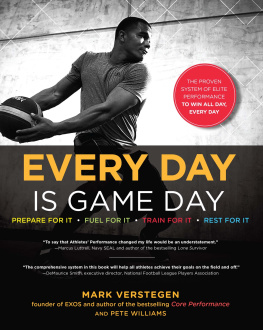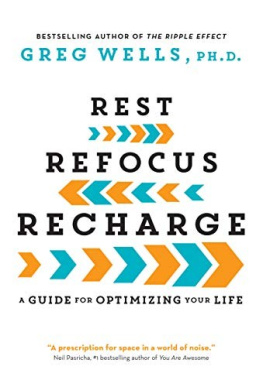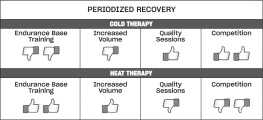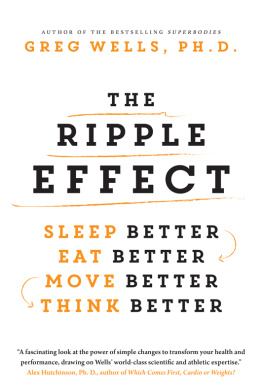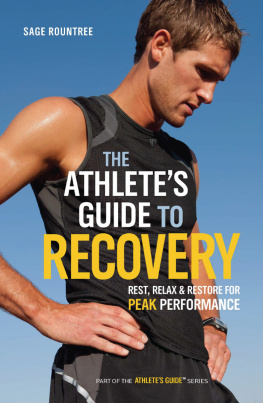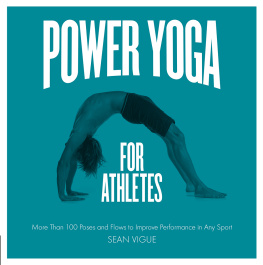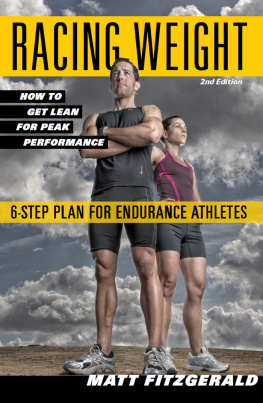WORKING SMARTER,
NOT HARDER
Almost every day Im reminded of how old ways have given way to the new; we now know so much more than we did before. I work with Canadian Olympic-level swimmers and Im lucky enough to be part of their support team. It may seem counterintuitive, but they spend less time in the pool than I used to when I was a competitive swimmer. Up until recently, the thinking was that the ticket to a gold medal was earned by training as hard and as much as you possibly could. Training was all about volume. But now we know there are better, more effective ways to improve health and performance. Simply putting in mindless miles isnt the best or the only way anymore. And the old way it doesnt work when youre expected to perform at a higher level more often and recover more quickly, and you cant afford to be broken down like you used to be.
By taking a more scientific approach to athletes abilities and skillstheir bodies and minds, their nutrition and training techniqueswhile drawing on our understanding of physiology, we can achieve more with less. A great example for all of us is five-time Olympian Dara Torres (twitter: @daratorres), from the United States. She won three silver medals at the 2008 Beijing Olympics24 years after her first Olympics. Dara openly credits her latest accomplishments to smarter training methods, including flexibility and strength training, to complement her in-water swimming program. She achieved this level of success by swimming less than she did earlier in her career while increasing her focus on new training methods that ultimately improved her physical abilities. Dara changed the worlds perception that age was a limiting factor in high-intensity sports like swimming. It is these new revolutionary scientific approaches to performance and health that I will explore in this book.
Athletes are some of the most dedicated, committed and motivated people on the planet; we can all learn from them. And we can learn from people who are less fortunate than usthose who experience disease. Diseases show us the flip side of the human bodythe side we see when a system is broken. The science of human physiology can help us understand what is happening to the various systems in the human body when they are affected by disease. When I started working as a research scientist at the Hospital for Sick Children in Toronto, I realized that the physiology of the children with chronic disease could be understood in the same light as the hyper-adapted physiology of athletes. The physical tests are the same and the ultimate limitations to health in chronic severe disease are very similar to the ultimate limitations to performance in sport. For example, the metabolic conditions in the muscles of a person having a heart attack are very similar to the conditions of a competitive runner near the end of a brutally hard race. And the oxygen levels of a child with lung disease may be similar to those of a synchronized swimmer who is holding her breath for 90 seconds while exercising at maximal intensities. By exploring the extreme limits of human health and performancefrom elite athletes to people with severe disease, we can all learn what the human body is capable of and what we can do to live a healthier, happier and better life.
Just a few days into the 2008 Summer Olympics in Beijing, one athlete began to rise above all others. Michael Phelps, from the United States, raced 17 times and broke seven world records on his way to winning eight gold medals. At the end of the competition, after all the races were finished and the medals had been given out, the beautiful Water Cube aquatics stadium was still full. No one had left. People knew they had witnessed a performance that might never be matched. And the organizers knew that this moment was special. So Michael Phelps was brought out to the podium one more time, alone, and was introduced to the crowd with the words, Ladies and gentlemen, the greatest Olympian of all time.
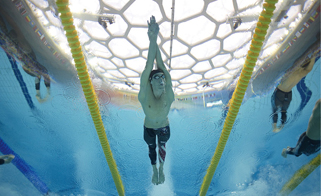
Michael Phelps success is due to a combination of unique genetics and years of training.
Michael Phelps is obviously an incredible athlete, but the adaptations of his body may be even more amazing than his performance. His arm span is 2.03 metres wide, longer than average, giving him a greater distance per stroke. This means he has to take fewer strokes than his competitors, which increases his efficiency and saves energy during races. Height and arm length (unlike waist size) are characteristics that are largely determined by genes, but Michaels commitment to training has had a powerful long-term effect on his body that is not genetic. Most swimmers at the international level will have a lung capacity that can be as much as two times the amount of a normal persons lungs. No one has published lung-testing data from Michael Phelps yet, but Id be willing to bet that his lung capacity is beyond limits even for swimmers. So is Michael a product of genetic talent or consistent training over an extended period of time?
Either we believe that athletes are supremely gifted (in Michael Phelpss case, with arm length and lung capacity) and therefore outstanding in their sport, or we assume that many thousands of hours of dedicated practice are required to reach these rarefied levels of achievement (like the story of Michael training 365 days in a row when he was 14 years old). Its the old nature vs. nurture debate, or in the sports context, genetics vs. training. Exercise changes our bodies via our genetic structures, and training over time can improve not only our blood, heart, lungs and muscles but also our DNA , leading to greater health and performance. Ultimately, Michael Phelps trained very hard, and his coach designed a well-structured program to take advantage of Michaels genes and develop his physical and mental abilities to the point where he became the best athlete in history.
Achieving world-class performance in any area is not easy. It takes dedication, focus, millions of repetitions and many years of specialized training. This may seem daunting and a bit depressing. How are we ever supposed to act on the inspiration of the Olympians and other world-class performers in music, drama, business or science? All of these people trained for years to achieve what they have accomplished. What is the magic that we can extract from these brilliant performers to live an Olympic-level life? It is the aggregate of 1% gains.
THE AGGREGATE OF 1% GAINS: IT ALL ADDS UP

